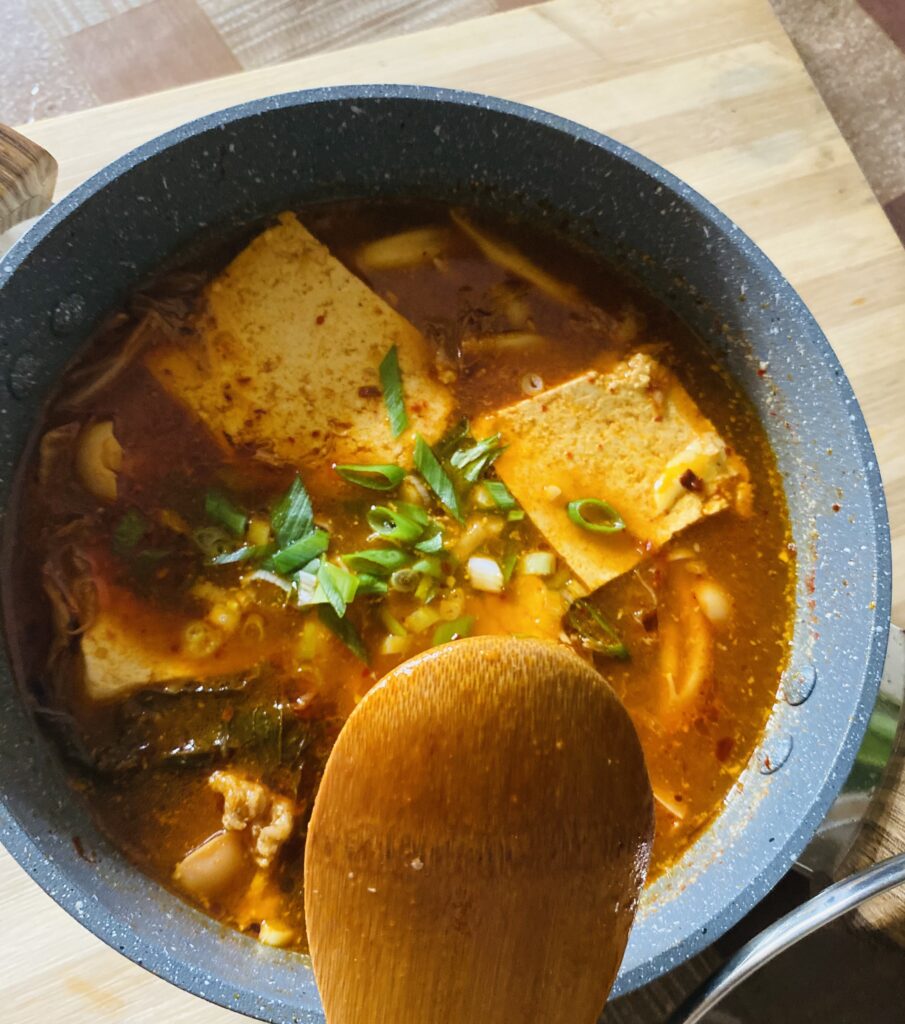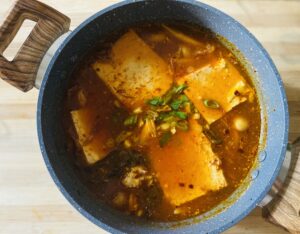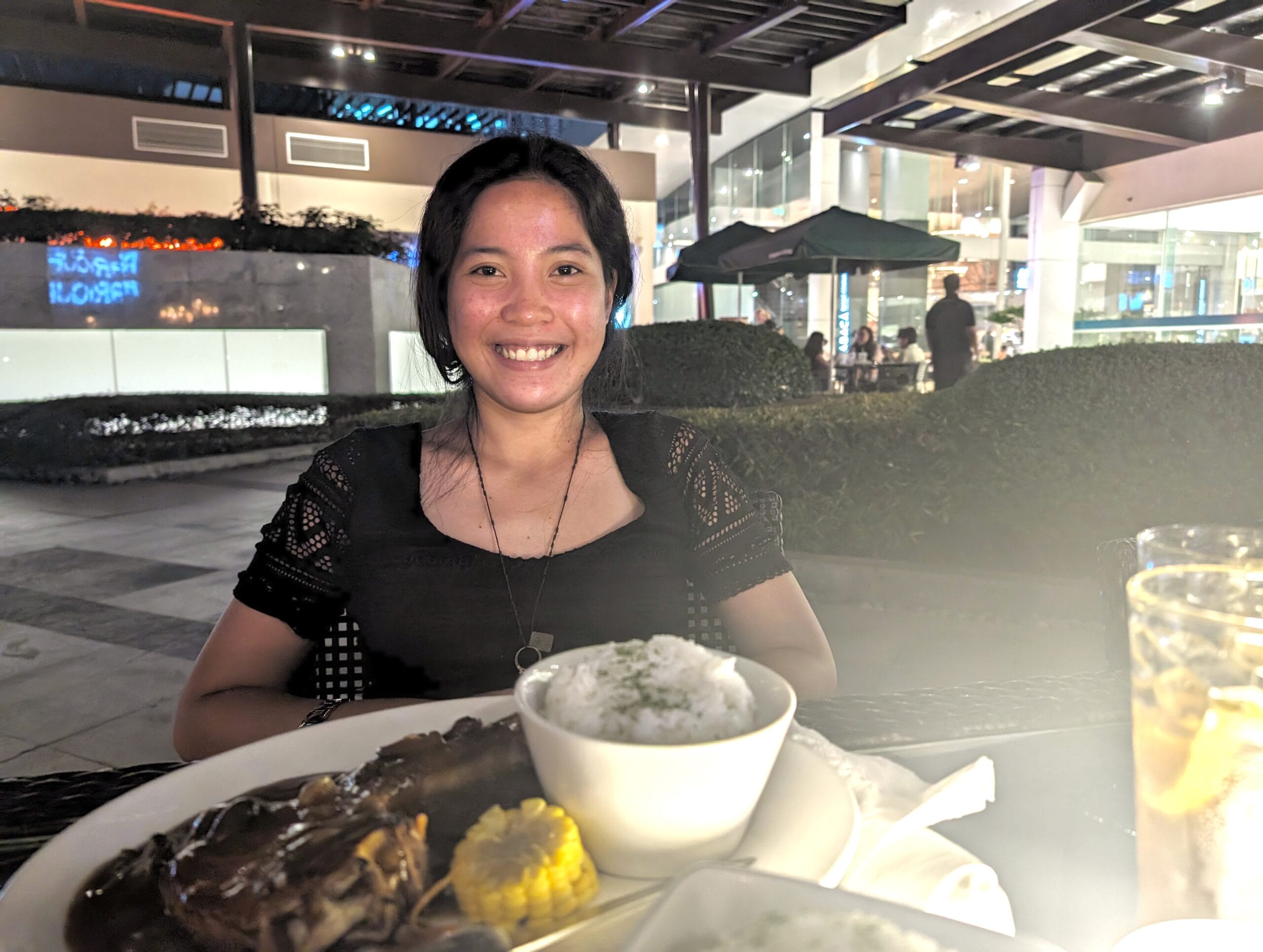Kimchi stew, or Kimchi jjigae, is one of those dishes that everyone in Korea loves. It’s warm, hearty, and packed with spicy, savory flavors that make it truly delicious. Honestly, I’ve never met anyone who didn’t fall in love with it—as long as they can handle a bit of spice. It’s one of those comforting meals that brings people together and always hits the spot. For more recipe you might also want to try our egg-drop soup, chicken halang-halang, and chicken penne. Chech out our Youtube channel to enjoy more.
My friend has recently fallen in love with K-pop and has been eager to try some authentic Korean food. As her pretty and kind friend (lol), I decided to make her wish come true, just like a fairy godmother would for Cinderella.

Now, I have to admit, I’m not Korean and I don’t really know how to cook Korean food. But, determined to fulfill my friend’s wish, I put on my fairy godmother hat and got to work. With a wave of my delicate fingers and some serious brain lubrication, I scoured the internet for an authentic Kimchi jjigae recipe.
At first, I was a bit confused between Kimchi soup and Kimchi stew. But after some research, I discovered that Kimchi stew is thicker and more robust than its soup counterpart. Kimchi soup tends to be less salty and is always served in individual bowls with rice.
Traditionally, in Korean cuisine, stews were served in a big pot placed in the center of the table, and the family would eat communally from it. These days, some people (including me) might get a little uneasy about double-dipping. So, for stews, I prefer to put individual bowls on the table along with a large spoon. This way, everyone can take what they like from the pot and enjoy their meal without any worries.

Table of Contents
Ingredients You’ll need

- Pork belly (cut into small pieces): Provides a rich, savory flavor and adds a hearty texture to the stew.
- Kimchi (chopped into small piece: The star ingredient, it infuses the stew with its distinctive tangy, spicy flavor.
- Kimchi juice: Enhances the stew with extra kimchi flavor, adding depth and complexity.
- Garlic (minced): Adds a fragrant, savory base that complements the other flavors.
- Gochujang (Korean pepper paste): Contributes a deep, spicy, and slightly sweet flavor, essential for authentic taste.
- Gochugaru (Korean pepper flakes): Adds heat and a vibrant red color to the stew, enhancing its visual and taste appeal.
- Tofu (cut into pieces): Provides a soft, creamy texture that contrasts with the other ingredients and absorbs the flavors of the stew.
- Water: Forms the base of the stew, allowing the flavors to meld together as it simmers.
- Sesame oil: Adds a rich, nutty flavor; one part for cooking and the other for finishing to enhance the aroma.
- Green onions: Used for garnish, adding a fresh, mild onion flavor and a pop of color.
- Enoki mushrooms: Optional, but they add a delicate texture and mild flavor that complements the stew.

Why You’ll love Kimchi Jjigae
It’s warm, hearty, and packed with spicy, savory flavors that make it truly delicious. Honestly, I’ve never met anyone who didn’t fall in love with it—as long as they can handle a bit of spice. It’s one of those comforting meals that brings people together and always hits the spot.

- dessert
Irresistible Bavarian Donut Recipe: The Ultimate Guide for Perfect Pastries
45 minutes medium
























